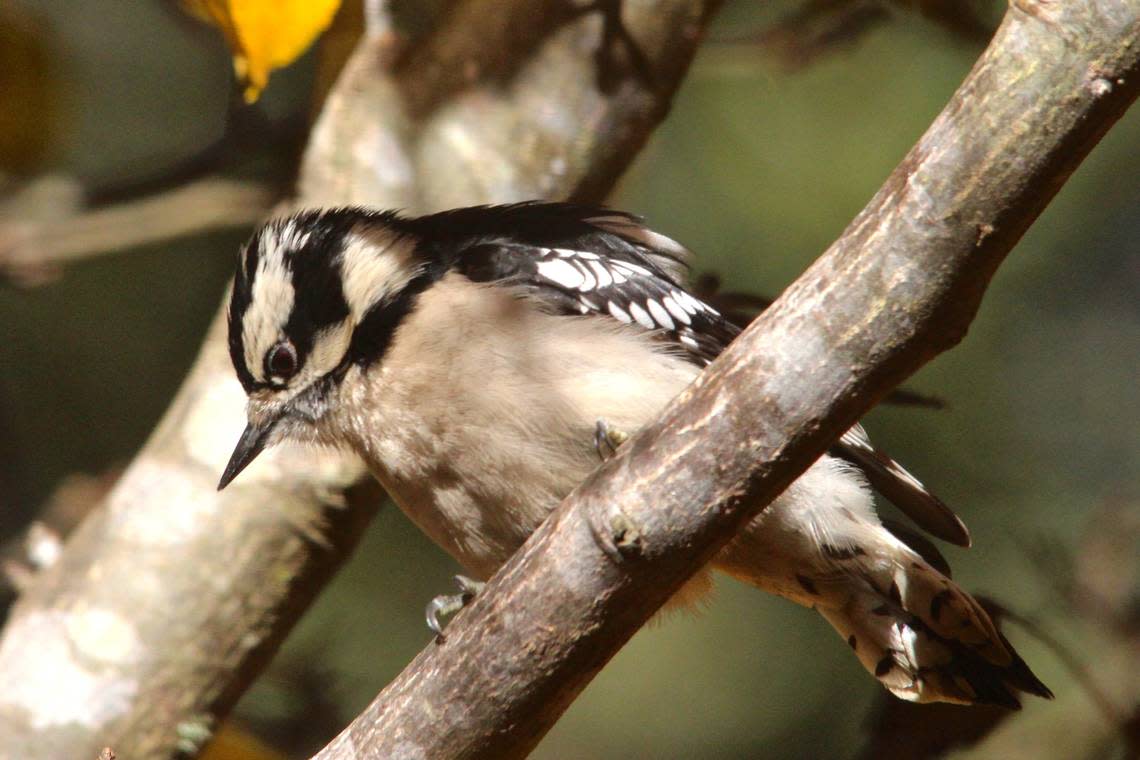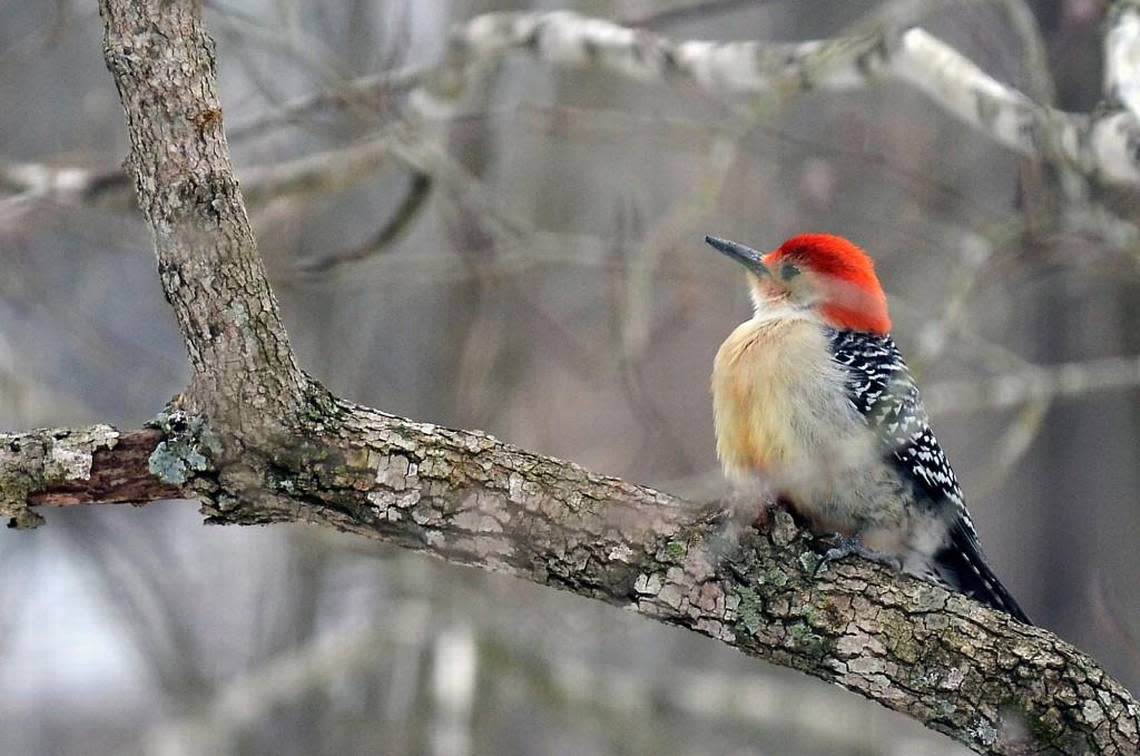How to (safely) get rid of woodpeckers attacking your house
Every season is woodpecker season in North Carolina, so it’s not uncommon to hear a bird or two rappin’ on nearby trees or the outside of your house.
Though the birds do the most damage between February and June (their breeding and territory-establishing season), they can perform their signature peck-peck-pecks at any point in the year.
The area’s common suburban and urban woodpecker species — primarily the downy woodpecker and red-bellied woodpecker — are resident, meaning they stay in the same place year-round, said Christopher Moorman, NC State professor and associate head of the Department of Forestry and Environmental Resources.
The News & Observer chatted with woodpecker experts to learn why the birds love pecking your home, and what to do to get them to stop.
Why are woodpeckers at my home?
Woodpeckers only come to homes for two reasons, said Greg Batts, a biologist with the NC Wildlife Resources Commission:
To eat bugs inside wood that’s breaking down.
To use siding as sounding boards, signaling to other woodpeckers not to enter their territory.
“Woodpeckers don’t want other birds taking up their resources, so their pecks tell other birds, ‘This is my spot in the world,’” Batts said.
“Or, they’re targeting siding made of soft wood that’s decaying, and insects are inside of it, so they know they’ll get a meal. It’s either a territory or a food issue.”
Moorman added: “They are not ‘invading,’ but instead may be shifting their individual behaviors to come in closer contact with homes, especially those with wood siding.”

How to get rid of woodpeckers around your home
First and foremost, treat your wood. This will ensure decaying wood doesn’t cause a safety issue down the road, and it’ll keep bugs at bay, making the birds find another spot for snacks.
But there are also a few scare tactics you can use to keep birds away without hurting them, Batts said:
• Spray them with a water hose: Using a gentle setting and from a safe distance, give the birds a spray. But this might not keep birds away long-term, so try putting up some fixtures that stay on your home.
• Use mylar tape: It’s shiny, silver tape, and woodpeckers don’t like reflective things.
• Or a mylar balloon: Or even leftover Christmas tinsel.
“The key is having something reflective with some movement,” Batts said.
• Put up an owl statue: But this won’t work long-term, since the birds will quickly notice that the “bird” isn’t doing anything but sitting there.
• Use bird netting: You’d typically use netting to block off aluminum siding that the birds are using for territorial calls.
“But instead of netting your whole home, treat your wood,” Batts said. “Seal the wood, that way insects can’t get in there, and there’s no reason for a woodpecker to come either.”

What not to do when a woodpecker is on your home
In short: Don’t hurt them. The birds are federally protected because they’re endangered, so people shouldn’t do anything to shrink an already small population, Batts said.
Here’s what not to do:
• Don’t shoot them: Even with softer bullets, like BB guns or paintball pellets.
• Don’t throw hard objects: This could break a bird’s wing or spine.
If your at-home methods aren’t working, the NC Wildlife Resources Commission won’t be able to remove it from your property. You’d have to call up the U.S. Fish & Wildlife Service, who would need to get a permit to euthanize the bird, Batts said.
“If you call Fish & Wildlife first, they’re going to tell you to try all the things I already shared before issuing any kind of permit,” he said. “That process takes months, and if they were to issue a permit, they wouldn’t move the animal — whatever it’s doing to your house it can just do to somebody else’s.”

Woodpeckers love this kind of wood, siding
The Internet Center for Wildlife Damage Management — a resource Moorman recommended — breaks down the materials woodpeckers prefer:
The birds love cedar and redwood siding, but they’ll damage pine, fir, cypress and others that are available.
They prefer natural or stained wood over painted.
They typically target new houses, especially ones with rustic-appearing, channeled plywood with cedar or redwood veneers.
They’ve been known to damage plastic used for rooftop solar heating and electric panels.
(Source: icwdm.org)
Ask the N&O
Have a question you’d like answered? Or maybe a tip or story idea you’d like to share? The News & Observer’s Service Journalism team wants to hear from you. For useful and practical information from our staff, reach us by submitting questions to our form or sending an email to ask@newsobserver.com.
Yes, NC beekeepers have purple (and blue) honey — and that’s an incredibly rare brag
Want some of NC’s rare purple (or blue) honey? Here’s where to buy it.
